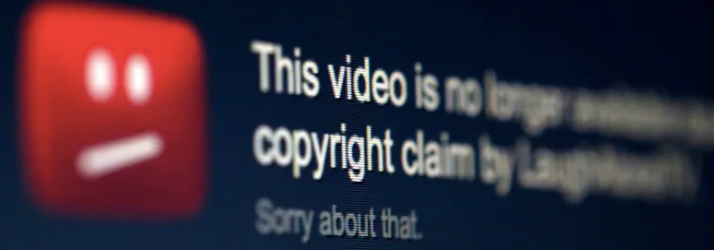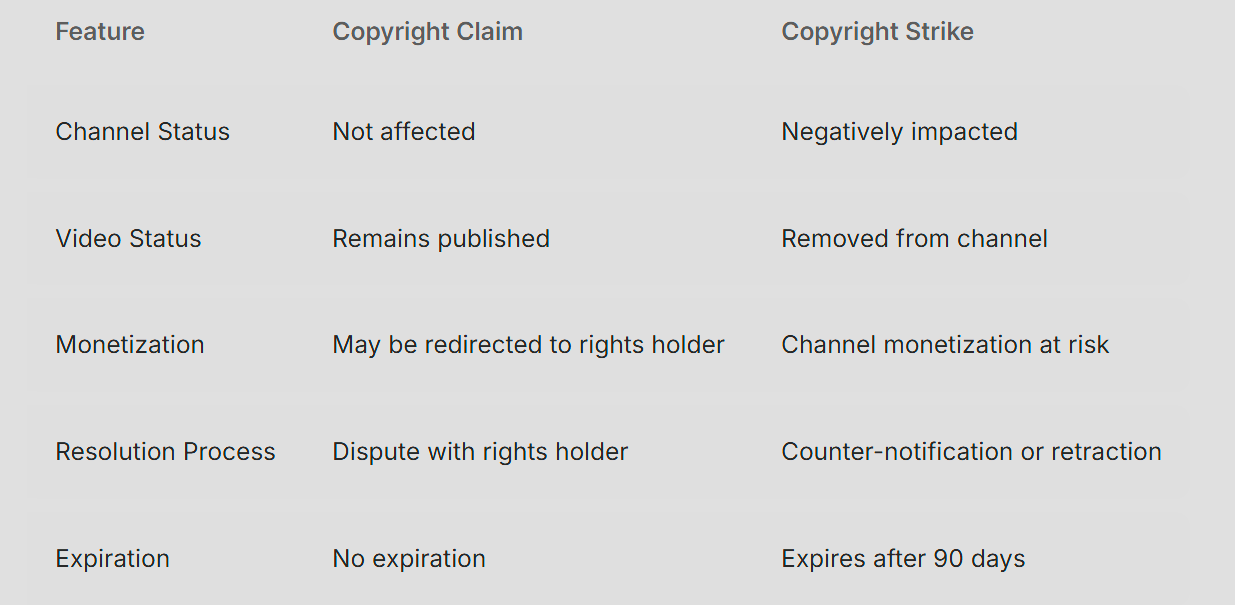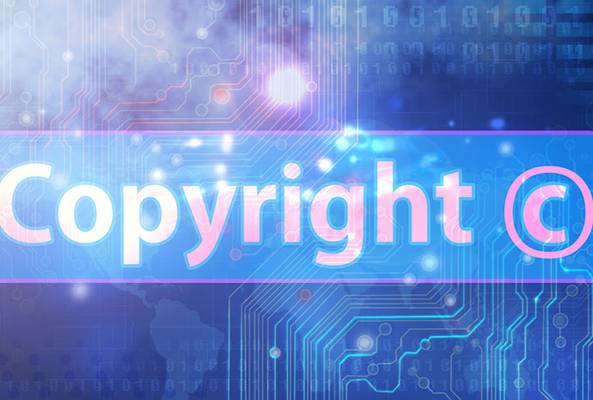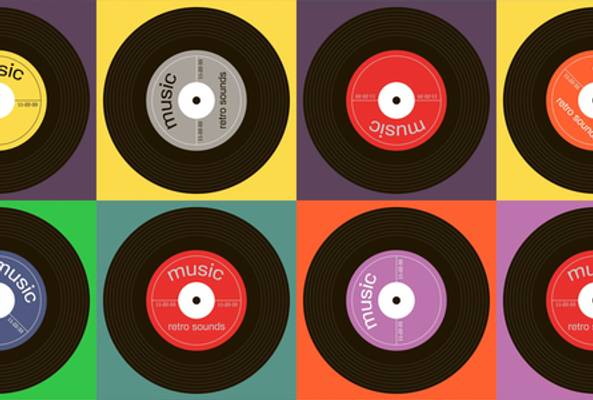Carla Marshall has 10+ years of experience in video marketing, social media management, content marketing, DRM, and SEO. She was previously Editor in Chief at ReelSEO.com, and as a journalist and video marketer, she's covered news stories, creator journeys, and digital-first publishing initiatives across all the major online video platforms. She is YouTube Certified and a judge for the Shorty Awards, as well as the UK, US, Canadian, Global, and EU Search Awards.
YouTube Copyright Claims vs. Copyright Strikes
In the world of copyright, most disputes aren't as straightforward as someone claiming you used their content. There can be some complicated moving parts when it comes to digital rights management and your responsibilities and obligations as a YouTube creator.
If you are a YouTube creator, you've probably seen both 'copyright claim' and 'copyright strike.' They both deal with copyright issues but affect your channel very differently. This guide breaks down their main differences so you stay informed.
Disclaimer: This post is an overview of how copyright works on YouTube. Please consult a lawyer if you need advice on a specific case.
What Is Copyright?
Copyright is a legal right that grants creators of original work exclusive rights to use and distribute their creations. This right applies to various types of creative works, including music, videos, images, and literary works. In simpler terms, it means that the creator has the right to control how their work is used, distributed, and monetized.
YouTube’s Current Copyright Policy
Unsurprisingly, YouTube is serious about copyright infringement. The platform has solid guidelines that match copyright policies in the U.S. (and presumably beyond), and it states very clearly that:
“Creators should only upload videos that they have made or that they’re authorized to use. Users should not upload videos that they didn’t make or use content in videos that someone else owns without necessary authorizations."
So, with that warning in mind, let's take a more detailed look at claims and strikes.
What Does Copyright Claim Mean on YouTube?

YouTube's Content ID system sends a copyright claim when it finds parts of a video that match copyrighted material from someone else. The copyright owner then picks whether to claim the video, basing the choice on whether the use qualifies as Fair Use. Here are some important points to note:
- A YouTube copyright claim will not adversely affect your channel.
- The rights holder can claim the revenue on your video if you have used their content.
- The copyright holder can place ads on your video to generate that revenue.
- The copyright holder can restrict your video in some countries or regions.
- The copyright holder may also choose to take no action (but absolutely don’t rely on that!)
- Copyright claims are a part of Copyright Law.
- They only apply to the videos flagged and not the entire channel
- A claim can be proven false depending upon whether you own the content being claimed by someone else.
Read more: How to Remove YouTube Copyright Claims From Your Videos
How YouTube Issues Copyright Claims
As a general rule, copyright claims on YouTube are made against video clips, audio, and other content that qualifies as owned media and hasn’t been available for publication. Claims are issued to creators if they don't own the TV or music clips, music, or other copyrighted media.
The rights owners have full control of their Content ID policy. Some creators and media publishers always opt to stop certain content from being uploaded to YouTube, like TV clips or music videos. Others allow their content to remain published on the uploader’s channel but only if some or all of the advertising revenue is funneled back to the copyright owners as compensation.
That all sounds a little confusing, so let’s break it down.
How ContentID Works on YouTube
ContentID claims come with a monetization, tracking, or viewing restriction rule. For the latter, the video may only remain live in certain countries or regions at the rightsholder’s discretion. The owner can also decide to:
- Block the entire video from being viewed on YouTube.
- Monetize the video by placing ads against it - this might come with the option of a potential revenue share with the uploader.
- The rights owner takes 100% of the revenue share from ads. The creator can still keep the video up but they won’t generate any revenue from that upload.
- Track the video’s viewership stats which disables any monetization and lets the owner see how well your video is performing in case they choose to claim any revenue in the future.
YouTube itself has a handy guide for the options here:

Note: Not everyone can access the Content ID feature. YouTube has very specific criteria for rights owners who want to track their content. Find out more details here.
What to Do if There's a Copyright Claim on Your Video
To resolve and remove a copyright claim, the uploader will need to dispute it. Once the claim has been formally disputed by the uploader, the rights owner then has 30 days to respond to that appeal with the option of either:
- Releasing the claim if they find evidence that the uploader does in fact have permission to use the material (as is often the case when a creator uses a music track licensed through a third party like Epidemic Sound).
- Rejecting the dispute and upholding the claim because they believe they still have a strong and valid case
Receiving a copyright claim takedown request can lead to a copyright strike against a YouTube channel. Even if the ownership of the video is being disputed, it can still make money, which will be stored in a separate account until the disagreement is settled.
The rights owner has 30 days to respond to the dispute. They can choose to release their claim, take down the video, or set up a delayed takedown. The uploader then has 7 days to retract their appeal.
Here is Rob, YouTuber-in-residence at vidIQ, explaining how to deal with copyright claims:
What Is a YouTube Copyright Strike?

A YouTube copyright strike, also known as a DMCA (Digital Millennium Copyright Act) strike, is a warning issued by YouTube to a channel owner for violating the platform's copyright policy. It occurs when a creator notifies YouTube that their content has been used without permission. The copyright owner can request that the video be removed, or they can choose to monetize it.
PSA: You do NOT want to attract any copyright strikes against your channel!

How YouTube Issues Copyright Strikes
A copyright strike is issued when a rights owner requests the legal removal of a video on YouTube because the uploader didn’t have permission to use their images, audio, or video clips. As you can see from the image above (thanks YouTube), a strike differs significantly from a claim.
Copyright strikes are manual and are activated when a rights owner files a DMCA takedown request. The owner must supply YouTube with specific information regarding the takedown which includes:
- The rightsholder’s contact information.
- A thorough description of the material the owner wants to protect.
- A sworn statement of good faith belief that the material (a video clip, a gif, an image, etc.) has been used without express permission.
After a DMCA takedown notice request is filed by the rights owner, YouTube has to remove the video in question from the uploader’s channel. That creator is notified, and they can either file a counter-notice or accept the takedown decision.
The Consequences of a Copyright Strike
If the video is taken down following a manual claim, the creator’s channel will receive a copyright strike. Oh, and deleting the offending video will not resolve the strike. The first strike can have a negative impact on channel features like live streaming and monetization. However, creators have the opportunity to redeem themselves by completing YouTube's Copyright School within 90 days.
Getting a second strike while the first is still active means an extra 90 days with restrictions. A third strike while previous ones are still on record will cause YouTube to permanently close your account and delete every video. You might also face legal actions that include fines and fees.
YouTube's Fair Use Explained
Fair Use lets you use bits of copyrighted work without asking first. On YouTube, this rule relies on four main points:
- Why and how you use the material (like for business or education)
- What type of work it is
- How much of the work you use
- How your use might affect the market for the original
Many creators wrongly think a quick credit or a note saying "no copyright infringement intended" will protect them. That is not the case. Each situation is judged on its own merits, and even a change in style might still lead to issues. When unsure, ask for permission or use royalty-free resources like the YouTube Audio Library.
Copyright Claims vs. Strikes: Key Differences
Essentially, a copyright claim is someone asserting that you have used their content, whether that be a video clip, an image, or a piece of audio. A copyright strike is much more serious for a YouTube creator, and your channel can be suspended for repeated copyright offenses.

Further Resources: Copyright and YouTube
★ The difference between copyright takedowns and Content ID claims
★ The legal issues all YouTube creators need to know about
★ The expert's guide to Fair Use & copyright on YouTube
★ How to get royalty-free music for your YouTube videos
FAQs
How do I remove a copyright claim on YouTube?
To dispute a claim, open YouTube Studio, go to your Content section, select the video with the claim, click on 'Copyright, ' and then 'Dispute. ' Share any proof you have that you have the rights or that the use is fair.
How long does a copyright strike last on YouTube?
A strike stays on your account for 90 days as long as your channel remains in good standing. Multiple strikes within that time mean stronger penalties.
Can I delete a video to remove a copyright strike?
No, removing the video does not cancel the strike. The strike will stay on your account for the full 90 days regardless.
Is it possible to get a copyright strike removed?
Yes, a strike can be removed if the copyright owner takes back their claim, if your counter-notification works, or after 90 days if no further action is taken.
What happens if I get a copyright claim on YouTube?
If you receive a copyright claim on YouTube, the copyright holder can choose to monetize your video with their ads and potentially restrict its availability in certain regions, but it won't lead to a channel strike or removal unless the claim progresses to a strike.
How to fix copyright claim on YouTube?
You can address a copyright claim by reviewing the claim details and then either removing or replacing the copyrighted material, or submitting a dispute if you believe the claim is incorrect.



